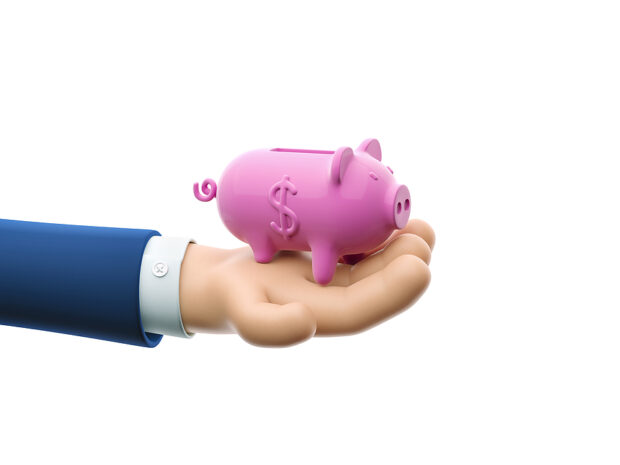Late last week, Lemonade announced a financial agreement to borrow 80 percent of the costs it incurs to acquire insurance customers from a venture firm.
The InsurTech carrier revealed the deal in a media statement and several social media messages.
The collection of announcements, referring to Lemonade’s new financial backers as “synthetic agents,” caused some confusion among readers of the social media messages who initially assumed that Lemonade was unveiling an AI-enabled digital agent that would do automated marketing for the company. Among the messages sparking requests for clarification was a Twitter thread from CEO Daniel Schreiber on Thursday beginning with the words: “Big News: We’ve invented ‘Synthetic Agents’ to enable rapid growth without burning cash!”
While images of pastel pink men and women covered with “synthetic” material, wires and circuits accompany the Twitter messages, a separate press release and a blog item went on to describe “a novel financial structure” rather than the birth of a new breed of insurance agent.
Under the financial program, commencing on July 1, General Catalyst, an early Lemonade investor, has agreed to finance up to 80 percent Lemonade’s customer acquisition costs (CAC) in return for 16 percent of the stream of premiums they help to finance, Lemonade said in its press release. The blog item, authored by Schreiber, went into more detail describing a cohort as all the people who join Lemonade in the month for which “synthetic agents”—financers—bankroll the CAC spend and receive a 16 percent “synthetic commission.” (Source: Lemonade’s “Synthetic Agents” – Lemonade Blog)
Once General Catalyst has recovered their investment and a “capped return” on any specific cohort, “the remaining lifetime value of the customers from that cohort accrues to Lemonade, entirely and forever,” Lemonade’s press statement said.
Explaining why Lemonade is using the term “synthetic agents” to describe the deal, all of Lemonade’s messages note that other carriers use independent agents to solve the problem of a “cash flow gap” that exists when growing companies have to pay upfront sales and marketing to obtain customers. While Lemonade acknowledges that independent agents deliver benefits beyond the delivery of “CAC-free customers,” it is that particular benefit of agent-carrier relationships that the financial arrangement with General Catalyst is meant to replicate.
Both Lemonade and General Catalyst describe CAC outlay as a particular problem for companies in growth mode because the cash flow gap forces these companies to pass up opportunities for profitable growth. Because they don’t see the gross profit payback on customers for several years, companies like Lemonade, who aren’t using independent agents for distribution (or “vintage agents” in the language of one of Schreiber’s Twitter thread), have to wait and defer their growth or depend on equity capital as they burn cash.
Lemonade believes the financing deal is a better solution to its CAC-spend problem than relying on independent agents because independent agents “own the customer,” and also because independent agents receive commissions over the life of the customer relationship “siphoning off much of the stream of gross profit” from a carrier.
The “synthetic commissions” being paid to General Catalyst are capped, the parties to the deal emphasize.
“We think the Synthetic Agents program is something of a game-changer for Lemonade,” Schreiber said in a press release. “Thanks to Synthetic Agents, we believe we will be able to accelerate growth without drawing down our capital reserves or selling more equity. That means generating a significantly larger business, sooner, with more cash in the bank, and with a materially higher return on capital.”
Pranav Singhvi, Managing Director, General Catalyst, agrees. “We believe Lemonade’s Synthetic Agents program gives Lemonade a balance sheet to invest in growth, so it can preserve its own capital for investments in its amazing technology and people,” said Singhvi, who is described as the architect of the Customer Value strategy—the strategy used to structure the financing arrangement.
In a separate writeup on General Catalyst’s website titled, “The Unbundling of Growth Equity,” the investment firm describes other applications of this type of financing, noting that it is designed for businesses where customers become more valuable over time. The article doesn’t refer to insurance at all, but instead to “subscription-like business models” with pay-as-you-go pricing structures, such as on-demand streaming services. In these models, “the faster your business grows, the more cash it burns from [sales and marketing, which means that] businesses effectively finance a customer’s lifetime value using their own balance sheet, versus realizing it at the point of sale.”
The article goes on to note, in an analysis similar to the Lemonade writeups, that “the acquisition of each customer represents a cash ‘trough’ on Day 1, which is only paid back in months and years to come by the lifetime value of that customer,” and explains that fast-growing companies continually burn cash as they continue to spend on new customer acquisition.
Lemonade estimates that for every dollar it spends on CAC, the company gets back $3 in gross profit over the lifetime of a customer. But it also takes at least two years to earn back the initial spend.
According to the General Catalyst, founders ultimately become dependent on “‘growth’ equity capital to fund their ambitious goals.” The price of this is that founders shares are diluted over time, the venture firm notes, also referencing the fact that “the days of free-flowing late-stage capital are gone.”
The General Catalyst writeup says the solution it created, referred to as the “Customer Value Strategy,” effectively treats CAC as an asset. The firm “pre-funds” a company’s sales and marketing budget and in return it is “only entitled to the customer value created by that spend”—capped at a fixed amount.
The writeup also affirms that the venture firm “owns the downside” of the deal, only getting pay “if and when” a company like Lemonade engaging in this type of arrangement gets paid. “The company never comes out of pocket to pay GC [General Catalyst] back,” the writeup says.
Lemonade revealed that its initial agreement with General Catalyst makes $150 million of committed CAC financing available to the InsurTech over the next 18 months, in the blog item penned by Schreiber. “The parties intend for this framework to adjust, renew, and upsize in concert with our expanding business,” he added.
Vintage Agents and Lemonade
As for independent agents, Schreiber said they have only a limited role to play in reaching Lemonade customers—”primarily to extend our reach to customers whom we cannot onboard through digital channels.”
Explaining why “the overwhelming majority of our business will continue to be direct to consumers,” he said that when “agent-mediated business replaces the magical [online] Lemonade experience with the agents’ interface,” this commoditizes the Lemonade brand and waters down the data which the company collects.
Also repeating his distaste for allowing agents to “siphon off as much as half of the gross profit of the customer for the life of the customer” through commissions, Schreiber concluded, “For business we cannot reach through other means, agents make sense; they are accretive when they are not cannibalizing. But for customers we can reach on our own we’re better off going direct….”





















 Why ‘Good Enough’ Is Killing Insurance: The Hidden Cost of Satisficing
Why ‘Good Enough’ Is Killing Insurance: The Hidden Cost of Satisficing  Northern California Flooding This Weekend Caused by Heavy Rain, High Tides
Northern California Flooding This Weekend Caused by Heavy Rain, High Tides  Berkshire Hathaway Enters Post-Buffett Era as Share Prices Fall
Berkshire Hathaway Enters Post-Buffett Era as Share Prices Fall  Nearly Half of 100 Largest P/C Insurers Destroy Value: ACORD
Nearly Half of 100 Largest P/C Insurers Destroy Value: ACORD 

